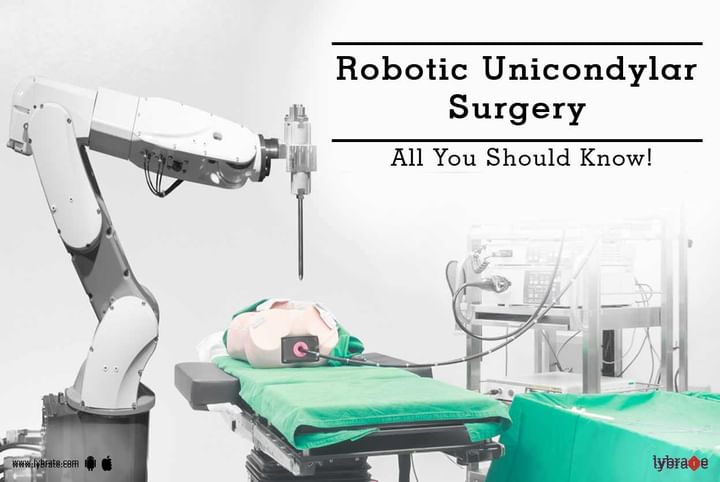Robotic Unicondylar Surgery - All You Should Know!
Robotic Unicondylar surgery, also known as Partial Knee Replacement surgery, with the assistance of a robotic arm. In this surgery, only one part of the damaged knee is replaced either inside (medial) part, the outside (lateral) part, or the knee cap of the knee.
Surgery to replace the whole knee is known as Total Knee Replacement Surgery.
Description of Robotic Unicondylar Surgery
In this surgery, damaged tissue and the bone of the knee joint are removed. This is done when arthritis is active in only one part of the knee. The areas are exchanged with a man- made implant, called prosthetic. The rest of the knee is preserved. Under this surgery, mostly small incisions are done, hence shorter recovery time.
Anesthesia used before the surgery is as follows:
-
General Anesthesia: Patient is asleep and pain free during the procedure.
-
Regional (spinal or epidural) Anesthesia: Patient is numbed below the waist and is also given medicine to relax and make them feel sleepy.
During the surgery, the surgeon makes a cut over the knee about 3 to 5 inches long.
In the knee joint, a small 3D camera and a tiny surgical instrument is placed.
Camera enables the surgeon to see a zoomed in view of the operative area in 360 degrees.
Then after, using the device hand and foot controllers, the surgeon can move the robotic arm slightly, which is attached to the surgical instrument.
Now another surgeon places the operation table in the correct position to verify the alignment of the operative area and the surgical instrument.
Risks Involved in Robotic Unicondylar Surgery:
There are several risks involved while having and after a Robotic Unicondylar Surgery:
-
Blood Clots: In procedures like these, blood clots are likely to happen. Blood clots typically occur within two weeks of surgery. However, it can be easily cured in a few days.
-
Infections: The chances of getting an infection after the surgery are very low. If the operative area gets any exposure during surgery and proper precautions are not taken by the surgeons, then the chances of getting an infection increase. This can happen in very rare cases.
-
Allergy to the Metal Components: A few patients may suffer from a reaction due to the metal used for the artificial knee joint. The metal used in this type of surgery is generally made from cobalt-chromium-based alloy or titanium. People usually know if they have a metal allergy. This risk can easily be avoided by telling your surgeon about the allergy.
-
Knee Stiffness: Following the postoperative instructions may lower the chance of knee stiffness. This problem can also be easily resolved with the help of physiotherapy and regular exercise. Serious cases of stiffness are known as Arthrofibrosis, which may demand a follow-up procedure so that scar tissue can be broken up and the knee can be adjusted.
Benefits of Robotic Unicondylar Surgery:
There are a number of benefits for Robotic Unicondylar Surgery:
-
High Accuracy.
-
A More Natural Knee Motion.
-
Small Incisions.
-
Less Pain.
-
Minimal Blood Loss.
-
Quick Recovery.
-
No need to remove Stapes.
-
All 4 stabilizing ligaments remain intact.
Conclusion:
A Robotic Unicondylar surgery is so minimal that in most cases patients walk within hours of surgery. It is always advisable to consult a doctor before going for surgery.



+1.svg)
